ক din rail forming machine is equipment used to roll metal strips or coils into various din rail profiles used for mounting circuit breakers and control equipment in control cabinets. This guide provides a comprehensive overview of din rail forming machine technology.
How Does a Din Rail Forming Machine Work?
A din rail forming machine works by feeding metal coil or strip stock through a series of roller dies that progressively form the stock into the desired din rail profile shape. The process involves unwinding coil stock, feeding through a straightener, then through the forming rollers, cutting to length, and final bending/punching operations.
The forming operation itself uses a series of roller dies that bend and form the strip stock incrementally into the din rail shape as it passes through. The key aspects of the working process include:
- উপাদান প্রবেশ: Coil stock is fed into the machine inlet, often using an uncoiler system with tension control
- ফর্মিং: Roller dies shape the strip through a series of bending/forming stations
- কাটিং: A flying shear or rotary shear cuts formed rails to length
- Post-forming: End punching, bending, notching operations
- Collection: Formed din rail stock exits the other end for collection
Advanced machines allow for automated part sorting, counting, bundling as well. Microprocessor controls precisely coordinate the process for consistency.
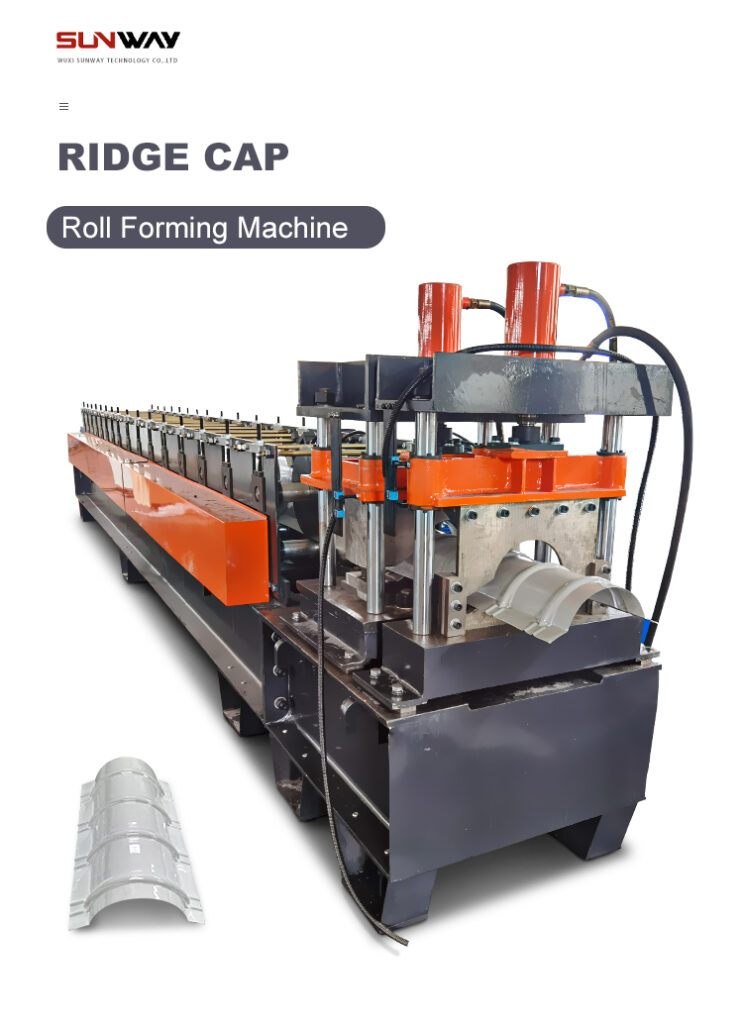
Types of Din Rail Forming Machines
There are two main types of din rail forming machines:
| Type | বর্ণনা |
|---|---|
| Manual | Basic machines for low volume production. Require manual adjustment of roller dies and settings |
| Automatic | Advanced CNC-controlled machines for high volume production. Automated operation and quick die changeovers |
Key Features
| Feature | বর্ণনা |
|---|---|
| Forming stations | Number of progressive forming stations through which stock passes |
| Automation level | Manual vs motorized operation and control |
| Die change system | Manual or automatic die change trolleys for flexible profiles |
| Production rate | Linear speed and hourly output rates |
| Post-forming | Additional bending, punching, notching, counting capability |
| Material capability | Thickness, width, material type (steel, stainless steel, etc) |
| Control system | PLC, microprocessor, touchscreen, etc |
Din Rail Profile Design
There are many standard and custom din rail profiles that these machines can produce. Some common designs include:
- TS15
- TS32
- TS35 (EN 50 022)
- G Profile
- Top Hat Profile
- Custom shapes
Machines equipped with automated die change systems allow fast changeover between profiles. Custom profile design services are also offered by some manufacturers.
Choosing A Din Rail Forming Machine Supplier
When selecting a din rail forming machine, key factors to consider include:
Reputation & Experience
- Industry experience level
- R&D and manufacturing capabilities
- Past client feedback and satisfaction
Range of Equipment
- Breadth of machines and tooling for various profiles
- Customization available
- Production volume scalability
Service & Support
- Responsiveness to inquiries/requests
- Manuals, training, installation support offered
- Maintenance and parts availability
Costs
- Pricing models – upfront, leasing available
- Total cost of ownership
- Cost of spare parts, consumables
- Value compared to capabilities
| Parameter | Importance |
|---|---|
| Brand reputation | High |
| Technical expertise | High |
| Equipment quality | High |
| Customization capability | Medium |
| After-sales service | High |
| Delivery time | Medium |
| Pricing | Medium |
-
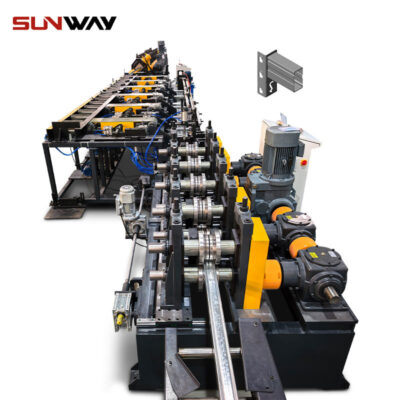 Storage Rack Shelf Box Panel Making Machine Steel Storage Rack System Box Beam Roll Forming Line
Storage Rack Shelf Box Panel Making Machine Steel Storage Rack System Box Beam Roll Forming Line -
 দ্রাক্ষাক্ষেত্র পোস্ট রোল ফর্মিং মেশিন
দ্রাক্ষাক্ষেত্র পোস্ট রোল ফর্মিং মেশিন -
 স্বয়ংক্রিয় আকার পরিবর্তনযোগ্য সিগমা Purlin রোল ফর্মিং মেশিন
স্বয়ংক্রিয় আকার পরিবর্তনযোগ্য সিগমা Purlin রোল ফর্মিং মেশিন -
 স্বয়ংক্রিয় আকার পরিবর্তনযোগ্য CZ Purlin রোল ফর্মিং মেশিন
স্বয়ংক্রিয় আকার পরিবর্তনযোগ্য CZ Purlin রোল ফর্মিং মেশিন -
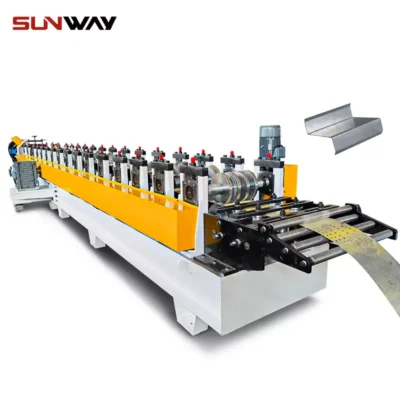 স্বয়ংক্রিয় আকার পরিবর্তনযোগ্য Z Purlin রোল তৈরির মেশিন
স্বয়ংক্রিয় আকার পরিবর্তনযোগ্য Z Purlin রোল তৈরির মেশিন -
 অটো সাইজ চেঞ্জেবল সি ইউ পারলিন রোল ফর্মিং মেশিন
অটো সাইজ চেঞ্জেবল সি ইউ পারলিন রোল ফর্মিং মেশিন -
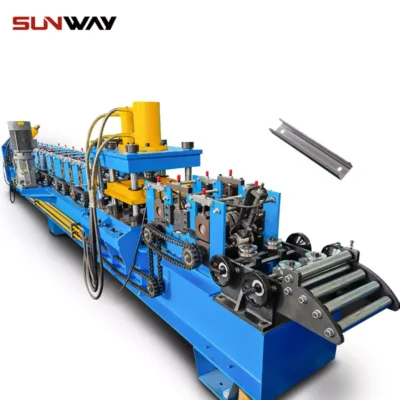 সি সেকশন ব্রেসিং ওমেগা স্টোরেজ র্যাক খাড়া পোস্ট রোল ফর্মিং মেশিন
সি সেকশন ব্রেসিং ওমেগা স্টোরেজ র্যাক খাড়া পোস্ট রোল ফর্মিং মেশিন -
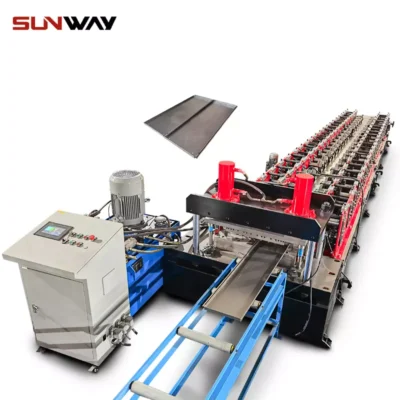 স্টিল বক্স প্লেট মেকিং রোল ফর্মিং মেশিন
স্টিল বক্স প্লেট মেকিং রোল ফর্মিং মেশিন -
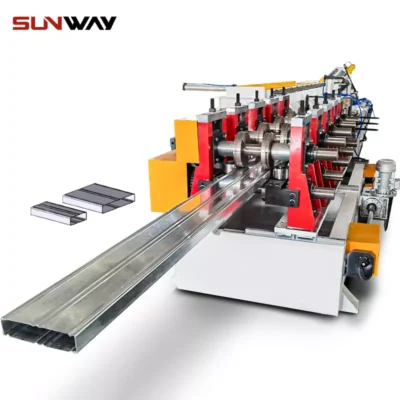 বক্স মরীচি স্টীল রোল শেল্ফ কলাম জন্য মেশিন গঠন
বক্স মরীচি স্টীল রোল শেল্ফ কলাম জন্য মেশিন গঠন
Leading Din Rail Forming Machine প্রস্তুতকারক
Some of the top global suppliers of din rail forming equipment include:
| প্রতিষ্ঠান | Location |
|---|---|
| Transfluid Maschinenbau GmbH | Germany |
| Techno Bright Engg | ভারত |
| Ge Emme SRL | ইতালি |
| স্যামকো মেশিনারি | China |
| Feuer Powelectric | China |
Price ranges may start around $10,000 for basic manual machines ranging up to $100,000+ for fully automated CNC din rail forming lines. When requesting quotations, be sure to provide details on production volumes and specifics shapes/sizes required.
Operating Instructions
Proper operation and maintenance helps maximize uptime and performance. Follow manufacturer guidelines for:
- Machine setup and installation
- Parameter settings
- Daily/weekly maintenance checks
- Lubrication schedule
- Recommended spare parts
- Die setup and changeover
- Troubleshooting tips
- Operator training
Advantages of Din Rail Forming Machines
- High production volumes possible in automated lines
- Flexible equipment allows fast die changeovers
- Consistent quality compared to manual methods
- Reduced labor involvement frees up workforce
- Small footprint compared to press brakes
- Lower tooling costs than press brakes
- Safer operation compared to hydraulic presses
- User-friendly controls and diagnostics
Limitations of Din Rail Forming Machines
- Higher initial capital investment
- Complex programming/setup on advanced models
- Potential bottlenecks if capacity exceeded
- Dependent on material type/thickness
- Limited size range depending on tooling
- Not suited for low volume or prototype work
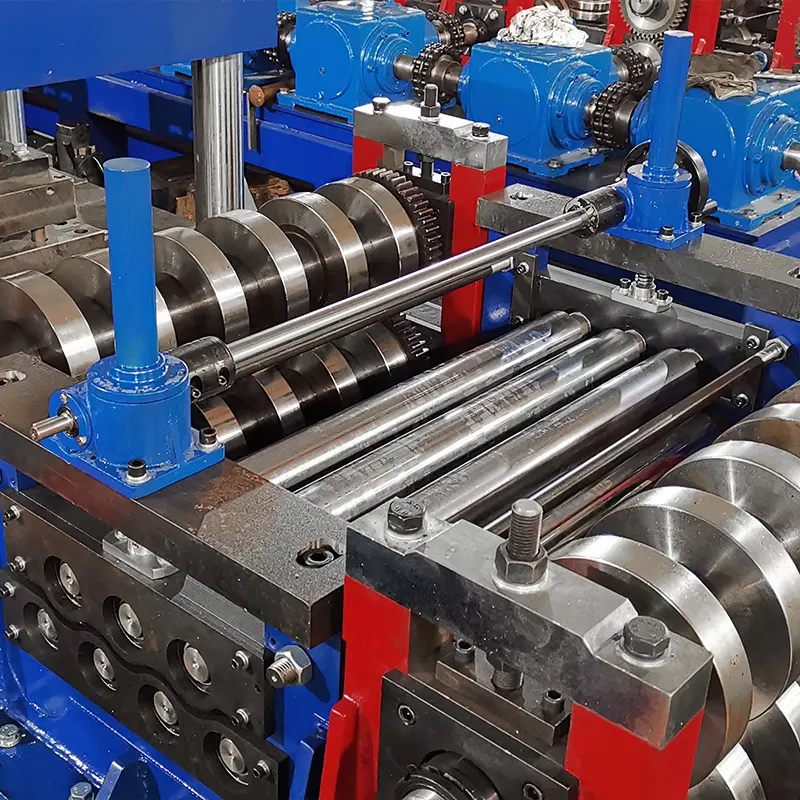
FAQ
Q: What materials can be formed on a din rail machine?
A: Most commonly steel and stainless steel strips/coils from 0.5mm to 3mm thickness. Some machines support thicker gauges up to 5mm as well.
Q: What production rates are possible?
A: Production rates vary widely but around 10-20 meters/minute is common. Larger automated lines with multiple forming heads can achieve over 50 meters/minute.
Q: Can custom and special profiles be produced?
A: Yes, custom profile tooling can be manufactured for most machines. Special profiles may require an engineered solution.
Q: What should I budget for a din rail forming system?
A: Budgets can range from around $10,000 for basic machines to over $100,000 for fully automated production lines. Discuss requirements with suppliers.
Q: What maintenance is required?
A: Daily inspections, scheduled lubrication, spare/wear parts (blades, rollers, bearings), and cleaning/adjustment as needed. Tooling must be changed over time.
Frequently Asked Questions (FAQ)
1) What tolerances are typical for TS35 DIN rail produced on automatic lines?
- Length: ±0.5–1.0 mm at 2–3 m rails; hole-to-edge: ±0.2–0.3 mm with servo punching; rail height/width: ±0.1–0.2 mm using closed-loop stands and inline laser gauges.
2) Which materials and coatings are best for corrosion resistance in control cabinets?
- Cold-rolled steel with Zn-Al-Mg (ZAM) coatings per EN 10346 ZM120–ZM200, or stainless steel AISI 304/316 for harsh/food/chemical environments. For electrical isolation, specify powder-coated rails with masked contact zones.
3) How fast can a modern DIN rail forming machine run without deforming the top-hat profile?
- For 0.8–1.2 mm CR steel TS35: 25–60 m/min on fixed lines; 12–25 m/min on compact lines. Above 60 m/min requires optimized flower design, anti-buckling entry, and pre-pierce synchronization.
4) Can one line switch between TS35, TS32, and G-profile without full teardown?
- Yes. Cassette tooling with recipe-based spindle spacing enables 10–30 minute changeovers. Shared pre-pierce tooling and adjustable guides reduce changeover waste to <2%.
5) What upstream/downstream equipment improves quality and OEE?
- 2–4 roll precision leveler, servo feeder, vision or laser metrology for hole and cut length, servo flying shear, automated stacker/bundler, and MES connectivity for traceability and SPC.
2025 Industry Trends for Din Rail Forming Machine
- Digitally verified pass design: Simulation-driven roll flowers and FEA minimize springback and end bow, cutting commissioning scrap.
- Inline quality assurance: Affordable laser micrometers and vision systems verify height, flange width, slots, and cut length in real time; SPC dashboards tied to MES.
- Energy-smart drives: Regenerative VFDs trim kWh/ton and comply with ISO 50001 reporting, increasingly requested by OEMs.
- Quick-change production: Cassette tooling and servo stand positioning shorten profile changeovers to under 20 minutes on premium lines.
- Materials shift: Rising adoption of Zn‑Al‑Mg coated steels (ZAM) for corrosion resistance; stainless usage grows in food/pharma and offshore.
- Safety by design: Safety PLCs (ISO 13849-1), better guarding (EN ISO 14120), and light curtains standard on 2025 models.
- Compact cells: Integrated punch-form-shear-bundle cells fit within 8–12 m footprints for panel shops serving panelboard/EV sectors.
2025 Benchmarks and Adoption Metrics
| Metric | 2022–2023 Typical | 2025 Best-in-Class | 2025 Common Range | Notes/Sources |
|---|---|---|---|---|
| Line speed (TS35, 0.8–1.0 mm) | 15–35 m/min | 50–70 m/min | 25–55 m/min | Vendor specs; SME reports |
| Cut length accuracy (2 m) | ±1.5–2.0 mm | ±0.3–0.7 mm | ±0.7–1.2 mm | Encoder + laser verify |
| Changeover (TS35 ↔ TS32) | 40–60 min | 10–20 min | 20–35 min | Cassette tooling |
| Startup scrap (%) | 3–6% | 1–2% | 1.5–3% | Digital recipes + FEA |
| Energy intensity (kWh/ton) | 160–210 | 120–160 | 135–180 | DOE AMO guidance |
| ZAM usage in DIN rails (%) | ~10–15% | 20–35% | 18–28% | EN 10346 ZM adoption |
| Inline vision/laser adoption (%) | ~25–35% | 60–75% | 45–60% | MES integration |
Selected references:
- U.S. DOE Advanced Manufacturing Office: https://www.energy.gov/amo
- ISO 50001 Energy management: https://www.iso.org
- EN 10346 (continuous hot-dip coated steel): https://standards.iteh.ai
- EN 60715 (DIN rail dimensions): https://webstore.iec.ch
- Society of Manufacturing Engineers (SME): https://www.sme.org
Latest Research Cases
Case Study 1: Quick-Change DIN Rail Cell for EV Panelboard Supplier (2025)
Background: An EV infrastructure OEM needed flexible output of TS35 and G-profile rails with frequent length and slot pattern changes for global panelboard variants.
Solution: Implemented cassette tooling, servo stand positioning, barcode-driven HMI recipes, and inline vision for slot position/size verification. Integrated regenerative drives and ISO 50001 energy logging.
Results: Changeover time dropped from 48 to 17 minutes; FPY improved from 96.2% to 99.1%; energy intensity decreased 18% (kWh/ton); overall OEE +8.7%.
Case Study 2: Corrosion-Resilient DIN Rails for Offshore PLC Cabinets (2024)
Background: Systems integrator serving offshore platforms faced corrosion claims on GI rails within 18–24 months.
Solution: Switched to EN 10346 ZM140 steel and optional 316 SS for critical cabinets; updated roll hardness and pass design to prevent coating micro-cracking; added felt-lined conveyors and peelable film applicator.
Results: Salt spray performance exceeded 1,000 h (ASTM B117) without red rust on cut edges after post-treatment; warranty period extended to 25 years; no throughput loss at 40 m/min.
Sources: EN 10346; ASTM B117 — https://www.astm.org
Expert Opinions
- Dr. Markus Heine, CTO, Data M Sheet Metal Solutions (COPRA RF)
Viewpoint: “Using FEA-backed flower design for TS35 drastically reduces springback variability across coil batches, stabilizing clip fit and cabinet alignment.”
Source: https://www.data-m.de - Michael Klipfel, Product Manager, The Bradbury Group
Viewpoint: “Cassette tooling and servo presets are redefining DIN rail manufacturing—sub‑20‑minute profile changes are now realistic even in small plants.”
Source: https://bradburygroup.com - Todd Miller, President, Isaiah Industries
Viewpoint: “For electrical OEMs, consistency beats peak speed; inline measurement and SPC cut field failures from poor rail geometry and slot mismatch.”
Source: https://www.isaiahindustries.com
Practical Tools/Resources
- DIN/IEC dimensional standard: EN 60715 (IEC 60715) — https://webstore.iec.ch
- Roll design and digital twin: COPRA RF — https://www.data-m.de
- Inline metrology (laser/vision): Keyence — https://www.keyence.com
- Energy optimization and benchmarking: DOE AMO — https://www.energy.gov/amo
- Coating/material standards: EN 10346; ASTM B117 — https://standards.iteh.ai | https://www.astm.org
- MES/traceability for forming: Siemens Opcenter — https://www.siemens.com
- Safety standards: ISO 12100, ISO 13849-1, EN ISO 14120 — https://www.iso.org
- Industry association insights: Metal Forming & Fabricating (FMA/SME) — https://www.sme.org
Last updated: 2025-10-27
Changelog: Added 5 new FAQs; inserted 2025 trends with benchmark table and standards; provided two recent case studies; compiled expert opinions with sources; listed practical tools/resources
Next review date & triggers: 2026-05-15 or earlier if EN/IEC 60715 is revised, major OEMs release sub-20 min changeover kits broadly, or DOE updates kWh/ton guidance for roll forming lines
